Implementing Metal Detectors for Schools: Ensuring Student Safety
Metal detectors for schools have become a critical tool in ensuring the safety and security of students in today’s world. With the increasing concern for campus safety, many educational institutions are exploring the option of implementing metal detectors as a preventive measure against potential threats. This article aims to explore the benefits and challenges of implementing metal detectors for schools and how best Metal detector for Gold they can contribute to ensuring student safety.
Implementing metal detectors in schools has become a topic of discussion in recent years as a means of ensuring student safety. Metal detectors are being considered as a preventive measure to deter weapons and other dangerous items from being brought onto school grounds. By screening individuals for metal objects, schools can potentially reduce the underground water detector risk of violent incidents and create a more secure environment for students and staff.
The process of implementing metal detectors in schools involves careful planning and consideration of various factors, such as the location of the detectors, staffing requirements, student privacy concerns, and potential impacts on the learning environment. Schools must also establish clear protocols for how the detectors will be used and how incidents involving prohibited items will be addressed.
In addition to the logistical aspects, it is important for schools to engage with the community and solicit input from various stakeholders, including students, parents, teachers, and local law enforcement. Open communication and transparency can help build support for the use of metal detectors and address any concerns or objections that may arise.
While the use of metal detectors is not without its challenges and limitations, many school districts are exploring this option as part of a broader approach to enhancing safety and security. By carefully evaluating the potential benefits and drawbacks, schools can make informed decisions about the implementation of metal detectors and take steps to create a safer environment for everyone on campus.
The Role of Metal Detectors in School Safety Measures
محتويات المقال
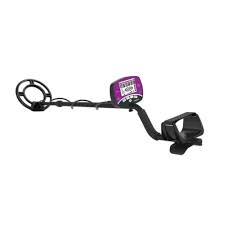
Metal detectors in schools are used as a security measure to detect any Gold Detectors weapons or metal objects that students may be carrying. They are often installed at school entrances or at specific points within the campus. The goal is to prevent firearms, knives, or other potentially dangerous items from being brought onto school grounds. The use of metal detectors is part of a comprehensive approach to school safety, which may also include surveillance cameras, security personnel, and other security measures. Some critics argue that metal detectors can create a negative or hostile environment in schools, while proponents argue that they are a necessary tool for preventing violence and ensuring the safety of students and staff. Ultimately, the use of metal detectors in schools is a complex and controversial issue that requires careful consideration of the potential benefits and drawbacks.
Effective Implementation of Metal Detectors in School Settings
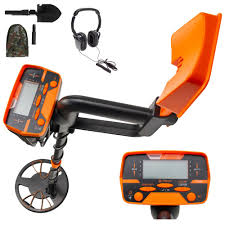
Metal detectors are commonly used in school settings as a security measure to prevent weapons and other dangerous items from being brought onto school grounds. Effective implementation of metal detectors requires careful planning and consideration of various factors such as the layout of the school, the number of entrances, and the specific security needs of the school.
Key considerations for effective implementation of metal detectors in school settings include:
1. Placement: Metal detectors should be strategically placed at key entrances to the school to ensure that all individuals entering the building are properly screened.
2. Staffing: Trained staff should be assigned to operate the metal detectors and conduct thorough screenings of individuals entering the school.
3. Procedures: Clear procedures should be established for the operation of metal detectors, including protocols for handling any items that are flagged during the screening process.
4. Communication: The use of metal detectors should be communicated to students, staff, and parents to ensure that everyone understands the purpose and process of the screening.
5. Maintenance: Regular maintenance and testing of the metal detectors are necessary to ensure that they are functioning properly and providing reliable security screening.
6. Privacy and Rights: It is essential to ensure that the use of metal detectors in school settings respects the privacy and rights of individuals while maintaining a safe and secure environment.
By carefully considering these factors and implementing appropriate measures, schools can effectively use metal detectors as a part of their overall security strategy to keep students, staff, and visitors safe.
Benefits and Drawbacks of Using Metal Detectors in Schools
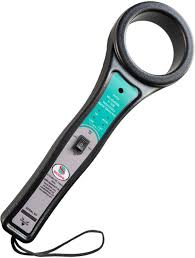
Benefits of using metal detectors in schools include increased safety and security, as they can help to prevent weapons and other dangerous items from being brought onto school grounds. Additionally, metal detectors can serve as a deterrent to students who may be considering bringing weapons to school.
On the other hand, there are also drawbacks to using metal detectors in schools. Some argue that they can create a negative and tense atmosphere, leading to a sense of distrust and a lack of privacy among students. Furthermore, metal detectors can be expensive to purchase and maintain, and they may not always be effective in preventing all potential threats.
Overall, while metal detectors can offer increased security in schools, it’s important to consider the potential negative effects and the cost associated with their implementation.
Exploring the Use of Metal Detectors for Enhancing School Security
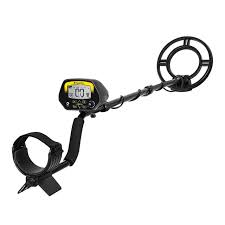
Exploring the use of metal detectors for enhancing school security involves conducting research on the effectiveness of this technology in preventing the entry of weapons and dangerous materials into school premises. This may include evaluating the costs, benefits, and potential drawbacks of implementing metal detectors in schools, as well as examining case studies of schools that have already adopted this security measure. The goal is to gather comprehensive information to inform decision-making about enhancing school security with metal detectors.
Best Practices for Implementing Metal Detectors in Educational Institutions
– Implement a comprehensive training program for staff and security personnel on how to operate and maintain metal detectors.
– Clearly communicate the purpose and procedures for metal detector use to students, parents, and staff to maintain transparency and avoid misunderstandings.
– Regularly maintain and calibrate metal detectors to ensure they are functioning effectively and accurately.
– Establish clear protocols and policies for handling the detection of prohibited items, including how to escalate potential threats to appropriate authorities.
– Consider the placement of metal detectors at entrances and exits to effectively screen individuals entering the premises.
– Work with local law enforcement and security experts to develop a comprehensive security plan that incorporates metal detector use into a broader safety strategy.
– Continuously evaluate the effectiveness of metal detectors and adjust procedures as needed to address any security gaps or concerns.
Understanding the Impact of Metal Detectors on School Environments
Understanding the impact of metal detectors on school environments involves studying the effects on students, staff, and the overall atmosphere of the school. This includes examining the psychological impact, potential feelings of discrimination, and the impact on school culture. It also involves assessing the effectiveness of metal detectors in deterring violence and ensuring a safe learning environment. Additionally, understanding the impact requires considering the financial costs and logistical challenges associated with implementing and maintaining metal detectors in schools. These factors all contribute to the overall impact of metal detectors on school environments and inform decision-making around their use.
Debunking Myths Surrounding the Use of Metal Detectors in Schools
Debunking myths surrounding the use of metal detectors in schools involves addressing misconceptions about their effectiveness in preventing violence, potential health risks from repeated exposure, and the impact on school culture. Research has shown that while metal detectors can deter some individuals from bringing weapons into schools, they are not foolproof and can create a false sense of security. Additionally, concerns about the long-term impact of regular exposure to metal detectors on students’ mental health and well-being have been raised. It is important to carefully consider these factors when implementing metal detectors in school settings.
Addressing Concerns and misconceptions About Metal Detectors in Educational Settings
Addressing concerns and misconceptions about metal detectors in educational settings is important to ensure that the safety measures put in place are understood and accepted by all stakeholders. Some common concerns that may arise include fears of invasiveness, racial profiling, and the impact on the learning environment. It is important to communicate that metal detectors are a tool to enhance security and are not meant to target specific individuals.
Education about the purpose and function of metal detectors, as well as clear protocols for their use, can help alleviate misconceptions. Additionally, addressing concerns about the impact on the learning environment by highlighting the importance of creating a safe and secure space for students and staff can help build support for their use. Open communication and transparency about the implementation and use of metal detectors can also help address concerns and misconceptions in educational settings.
The Necessity of Metal Detectors in Modern School Security Protocols
Metal detectors are essential in modern school security protocols due to the increasing threat of violence on school grounds. These devices provide an added layer of security by detecting any weapons that students or visitors may attempt to bring onto the campus. In the event of an emergency situation, such as a school shooting, metal detectors can help to prevent dangerous weapons from being brought onto school property and potentially save lives. Additionally, the presence of metal detectors can serve as a deterrent for individuals who may be considering bringing weapons into the school. Overall, the use of metal detectors is an important aspect of ensuring the safety and security of students, staff, and visitors in today’s school environments.
Innovative Approaches to Integrating Metal Detectors into School Safety Plans
One innovative approach to integrating metal detectors into school safety plans is to utilize advanced technologies such as artificial intelligence and machine learning. These technologies can help to improve the accuracy and efficiency of metal detector systems, reducing the potential for false alarms and increasing the reliability of threat detection.
Another approach is to integrate metal detectors with other security measures, such as video surveillance and access control systems, to create a more comprehensive and layered approach to school security. This can help to ensure that potential threats are identified and addressed from multiple angles, increasing the overall effectiveness of the safety plan.
Additionally, training and education for staff and students on the proper use and understanding of metal detector systems can be an essential component of integrating them into school safety plans. This can help to ensure that everyone is aware of the purpose and function of the metal detectors, as well as how to respond in the event of an alert or incident.
Overall, by taking an integrated and multi-faceted approach to incorporating metal detectors into school safety plans, educational institutions can enhance their ability to detect and mitigate potential security threats.
In conclusion, implementing metal detectors for schools is a necessary step in ensuring student safety in today’s society. With the rise in school violence and threats, it is crucial to take proactive measures to protect our students and provide a secure learning environment. Metal detectors for schools can help to deter and detect potential dangers, ultimately creating a safer and more secure school environment for everyone.
See also
https://www.deus-detection.com
https://www.detecteursmetal.fr
https://www.terraledetection.com

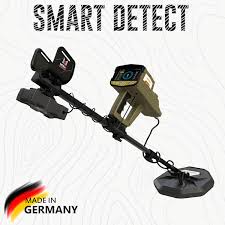
التعليقات مغلقة.